Hey folks 👋 Welcome to this new edition of The Growth Mind!
Today, we deep dive into:
💸 Why Pricing is a crucial (and cool) lever
♟️ The SaaS Pricing Strategies
🎁 The Pricing Models to package your offer
Reading time = 7 minutes
[Sponsor] Need to grow your LinkedIn brand ASAP? Try Taplio.
Taplio is an all-in-one AI-powered LinkedIn tool I love.
It writes and schedules personalized content for you, making you save hours per week while producing great content.
Suggests posts based on proven viral content
Creates carousels using any URL or topic
Expands your network with access to quality leads
Monitors your performance with advanced analytics
6,200+ LinkedIn experts, founders and marketers already use Taplio to grow their personal brand.
1# Why pricing is a crucial (and cool) lever
Pricing has always been an undervalued lever.
According to a survey by Reforge, 80% of growth teams primarily focus on acquisition experiments, while only 20% focus on monetization and pricing experiments.
That’s a topic where the ownership is often blurry: is it Marketing, Product, or Business who’s owning it?
Some companies have a properly defined ownership, but that’s not always the case, especially in early stage. So it’s generally a lever way less touched than the others.
Working on Pricing is cool, and has many advantages:
It’s the most direct lever to influence revenue: When you touch pricing, it has an immediate impact on revenue. For instance, Hubspot saw a significant revenue increase after restructuring their pricing model based on customer value and willingness to pay.
The experimentation possibilities are endless: You can experiment with different pricing tiers, different price points, and segment your approach depending on the country, industry, or user type. Either to maximize revenue per paying user or to generate more conversions. The playground is fantastic.
Pricing is at the heart of your positioning strategy: Having a low or a high pricing can strongly impact how people perceive your product and its value. It’s highly linked to your Brand & Marketing strategy. It’s also a way to differentiate yourself from your competitors, by being cheaper, more expensive, or having a model which is totally different.
Pricing influences your unit economics (gross margin, CAC, LTV, Payback period): It shapes your overall growth strategy as a company. Having a good pricing, adapted to your business model and channels, can unlock many growth opportunities. Your CAC should be adapted to your revenue per user, for example.
2# Pricing strategies - How to price right?
Pricing is not a perfect science and is a tricky, evolving concept.
In the SaaS industry, pricing right is a 3 components equation:
💰 High Gross Margin target
One of the easiest ways to price a product is doing it based on a gross margin target:
You calculate the total costs you need to sell a product/service (COGS - costs of goods sold)
You add your gross margin on top of it
It gives you your final price
Making sure you generate enough profit each time you make a sale is crucial, then a targeted gross margin should be a key component of your pricing strategy.
Software Equity Group, a company specializing in Software M&A, provides the following Gross Margin benchmark:
“Based on our experience, a good benchmark gross profit margin for a SaaS company is over 75%[…]Anything below 70% begins to raise a red flag for us and prompts us to do a deeper dive into several other metrics.”
Having a gross margin >75% is then a good target to have in mind when pricing your product.
But it can’t be the only element to look at.
🎯 Clear Price Positioning
The price you choose has a strong influence on customers’ perception of your product.
You generally have 3 price positioning options:
The low-cost challenger: You’re cheaper than the average market. You generally have fewer features than higher-priced solutions or less efficient customer support for example. Example: RyanAir in the airline industry
The on-par with competition: Your pricing is aligned with the industry average, making sure you’re competitive. That’s a positioning approach, but when you choose it, you should differentiate yourself through another element than pricing (features, customer support, UX…).
The premium player: You’re priced (way) higher than the industry average. That’s a great thing to reinforce the perceived value of your product. But the overall positioning should be aligned with it, having a high price only will not be enough to be considered as premium.
Your price positioning should fit your business model (coming back to our gross margin target above) and your product.
🫶 Perceived Value of your product
The last element to take into account when you price your SaaS is the value you provide to the eyes of your customers. They are the ones who decide if they buy or not.
Here are two methods you can use:
Paywall/pricing page conversion analysis - The “hands-on” method:
This is a practical and real-world method, unlike surveys. You can see if your pricing aligns with customer expectations by analyzing your paywall or pricing page conversion rates and comparing them to industry averages.
You can experiment with different price points to find the best balance between maximizing conversions (usually with lower prices) and increasing average revenue per paying user (ARPPU) with higher prices. Metrics like free-to-paid conversion and average revenue per user (ARPU) also provide insights into your pricing strategy’s effectiveness.
However, keep in mind that these metrics can be influenced by factors other than pricing, such as the paywall copy, offer packaging, or placement. Ensure the price points you test align with your gross margin target and price positioning.
Van Westendorp Price Sensitivity Meter - The “Consultant” method:
The principle is to send a survey to at least 100 prospects with 4 questions:
At what price would it be so low that you start to question this product’s quality?
At what price do you think this product is starting to be a bargain?
At what price does this product begin to seem expensive?
At what price is this product too expensive?
You give a range of prices to your customers to help them properly answer those questions.
Based on those answers, you build a chart where you plot:
On the horizontal axis, the price points tested.
On the vertical axis, the % of respondents willing to pay that price.
It will result in four curves:
Too Cheap: Represents the percentage of respondents who believe the product is too cheap at various price points.
Cheap: Represents the percentage of respondents who believe the product is a bargain at various price points.
Expensive: Represents the percentage of respondents who believe the product is expensive but still worth buying at various price points.
Too Expensive: Represents the percentage of respondents who believe the product is too expensive at various price points.
The intersection of those curves gives you the “Range of Acceptable Prices”: the price range between the points where the curves for "Too Cheap" and "Too Expensive" intersect with the "Cheap" and "Expensive" curves. This range indicates the spectrum of prices considered acceptable by the majority of respondents.
This method is great for understanding how prospects perceive different price points. But it’s not real life, it’s a survey, so it does not prevent you from testing your pricing in real conditions.
3# Pricing models - How to package your offer?
Finding the right price range is a thing, but in the SaaS industry, there are multiple ways to package your offer.
There are several elements you can use to build your pricing plan and package your offer:
Tiers: Different pricing levels based on features, usage, or user numbers.
Add-ons: Optional additional features, coming on top of a pricing plan.
Seats: Price based on the number of users.
Volume of Actions: Price based on the volume of transactions or actions.
Features: Price tied to specific features used.
→ It’s crucial to determine your value metric – the unit of consumption that best reflects your product value, especially if you want to go for a usage-based model.
There are 5 pricing models you can use to package your offer 👇
Flat-rate Pricing
❓What is it: Flat-rate pricing involves charging a single fixed price for access to a product or service, regardless of usage or features.
✅ Pros:
Simplicity and predictability for customers.
Easy to manage and implement for providers.
❌ Cons:
Lack of flexibility to cater to different customer needs.
Potential loss of revenue from high-usage customers.
🔎 Example: ChatGPT charges a flat 20$ fee for their “Plus” plan.
Tiered Pricing
❓What is it: Offers multiple pricing tiers, each with different levels of features, usage limits, or services. The vast majority of SaaS use tiered pricing.
✅ Pros:
Flexibility to adapt to different customer segments.
Potential for upselling customers to higher tiers as their needs grow.
❌ Cons:
Complexity in managing multiple tiers.
Pricing can be hard to understand for customers.
🔎 Example: Dropbox has 4 different tiers, adapted to different customer segments.
Per-(active) User Pricing
❓What is it: Charges customers based on the number of users (seats) accessing the service.
✅ Pros:
Scales with customer growth.
Predictable revenue for providers.
❌ Cons:
Can be expensive for larger teams.
Might discourage adoption by larger organizations.
🔎 Example: Slack subscription is based on per user per month (with a nice AI add-on).
Usage-Based Pricing
❓What is it: Pricing is based on the occurrence of specific events or transactions.
✅ Pros:
Direct correlation between cost and usage.
No subscription is needed.
❌ Cons:
Revenue is less predictable. It’s not a classic subscription plan.
May discourage heavy usage due to cost concerns.
🔎 Example: Stripe charges a fee for each transaction processed through its platform.
Hybrid Models
❓What is it: Combines elements of various pricing strategies to offer more flexibility and better cater to customer needs. Actually, the vast majority of SaaS use Tiered Pricing, combined with another model (per user, usage-based…).
✅ Pros:
Flexibility to address diverse customer needs.
Ability to maximize revenue from different customer segments.
❌ Cons:
Complexity in implementation and management.
Potential confusion for customers.
🔎 Example: Hubspot combines Tiered Pricing with Per-User Pricing and Usage-Based Pricing (up to 1,000 contacts, if more, you plan price increase). Quite complex but has the advantage of being tailored to each business.
What about Freemium/Free Trials?
The vast majority of SaaS, especially those that are Product-Led Growth, now include a Freemium Model (free plan, with limited features) or a Free Trial (try for free during X days). That’s a must to enable your customers to try before they buy.
They are not per se Pricing Models, but more strategies to acquire users that will test your product, and eventually upgrade to a paid plan.
With that being said, I truly believe they are strong enablers of a powerful acquisition engine.
🧪 The conclusion? Test & Iterate constantly, there is no one-size-fits-all formula
You’ve seen that pricing is a complex topic and is affected by many elements.
You need to constantly iterate and test new things. Even mature SaaS companies regularly change their pricing, packaging, or both. The playground to experiment is immense.




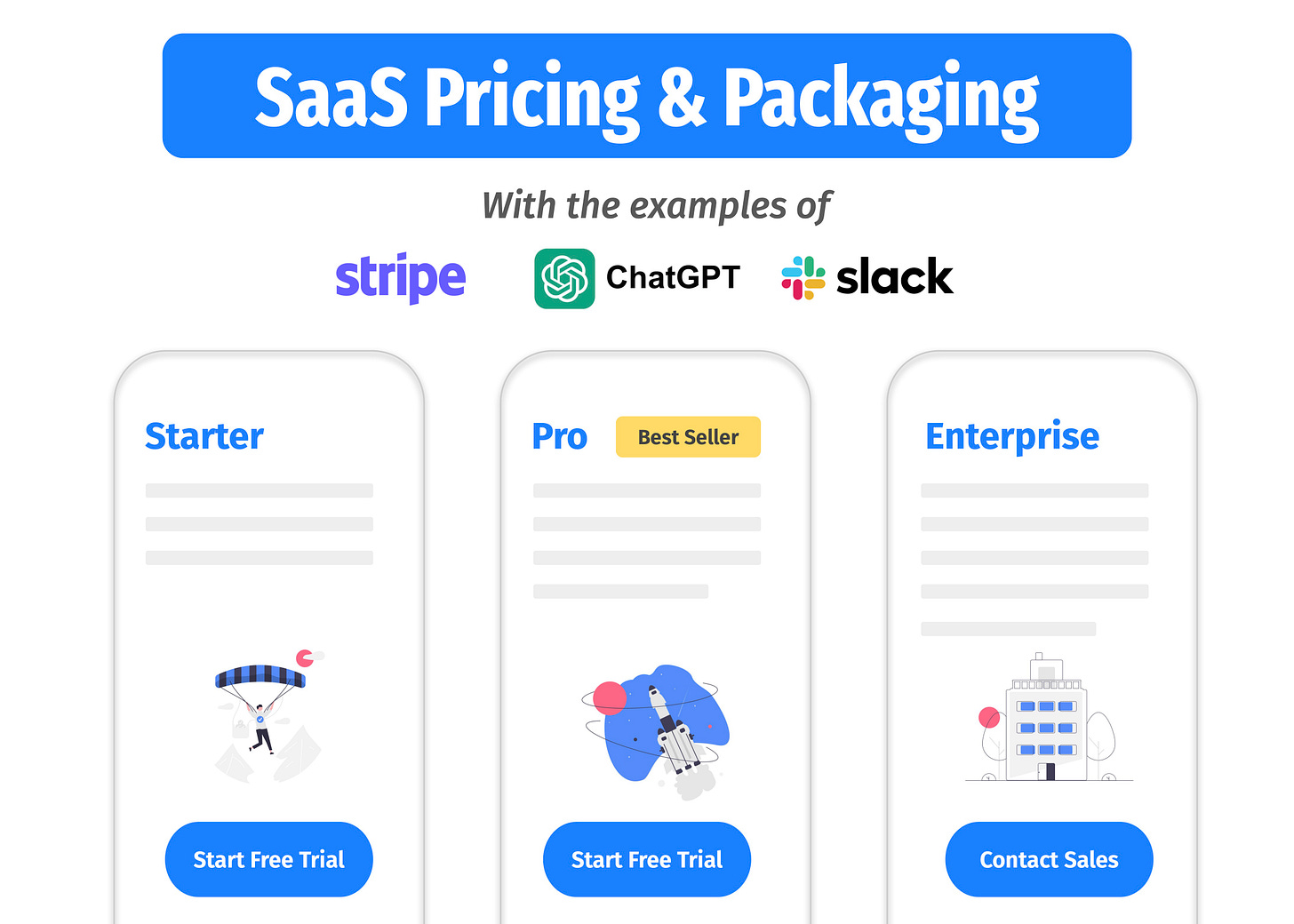

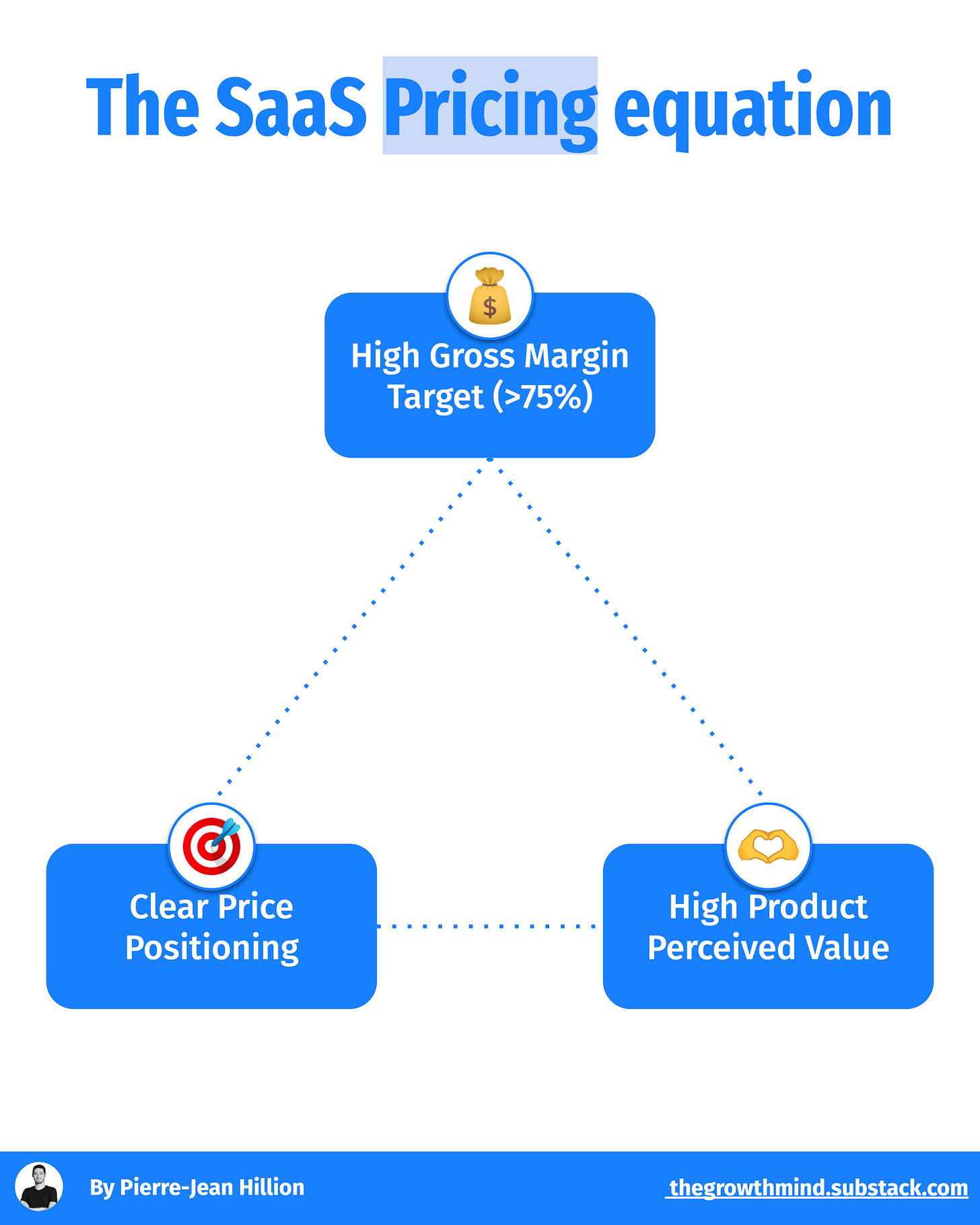

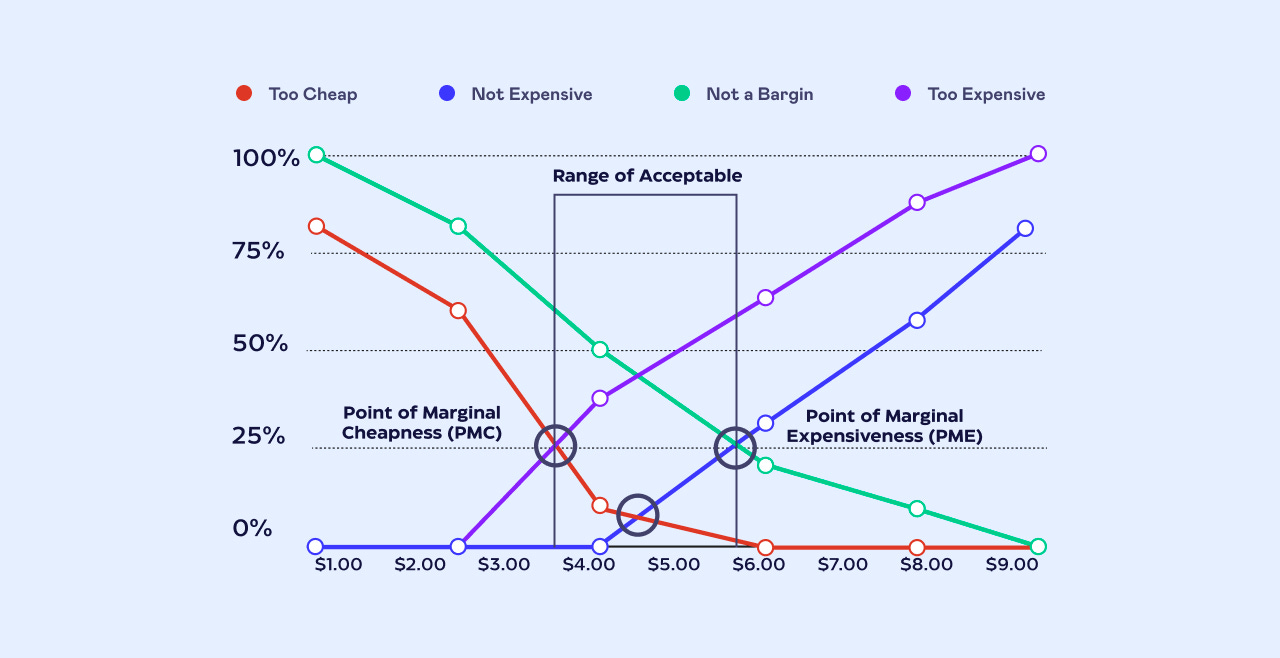

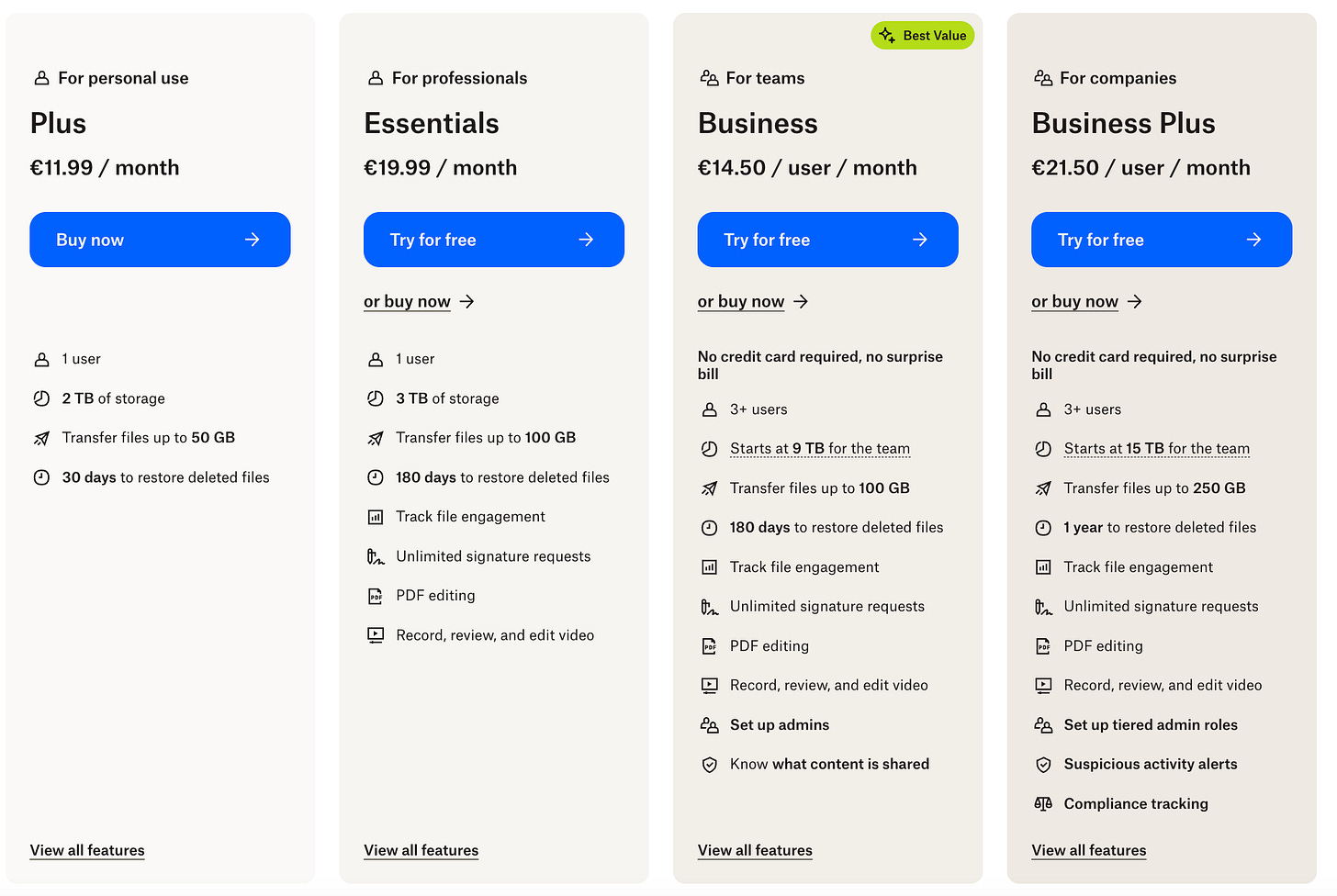

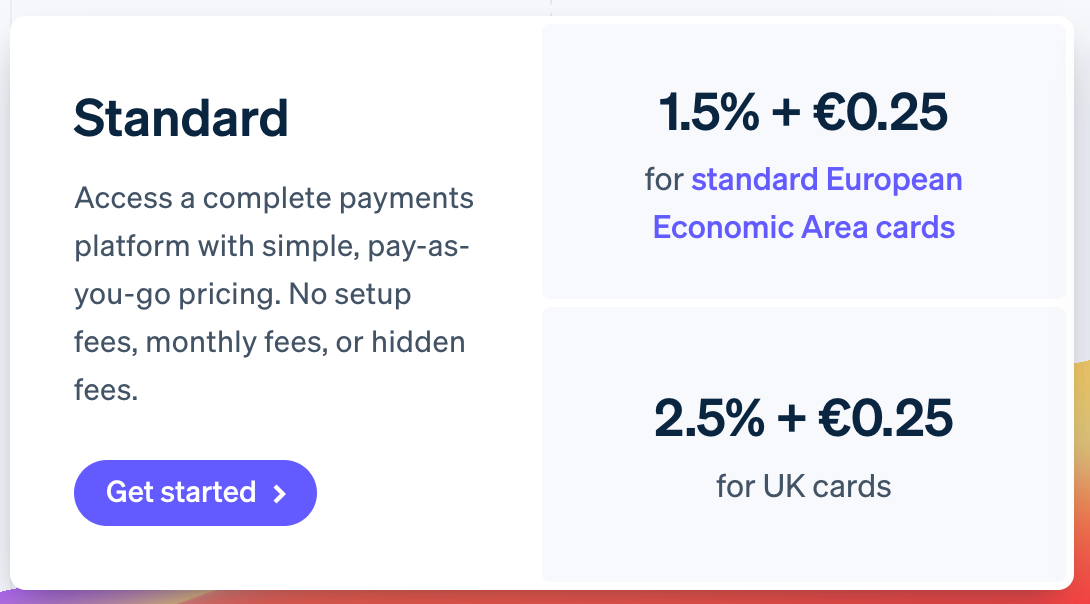

merci pour cette analyse !